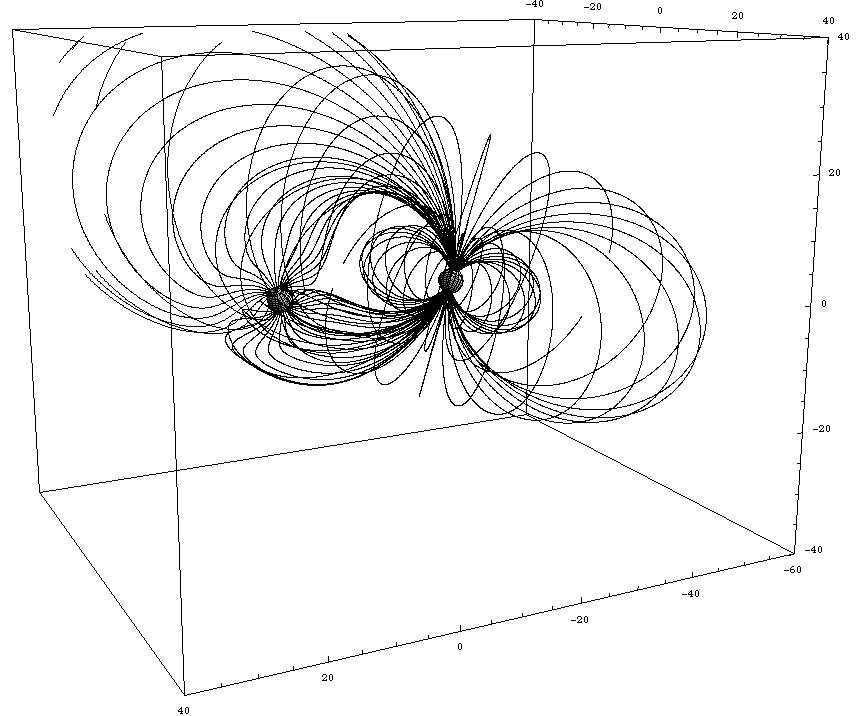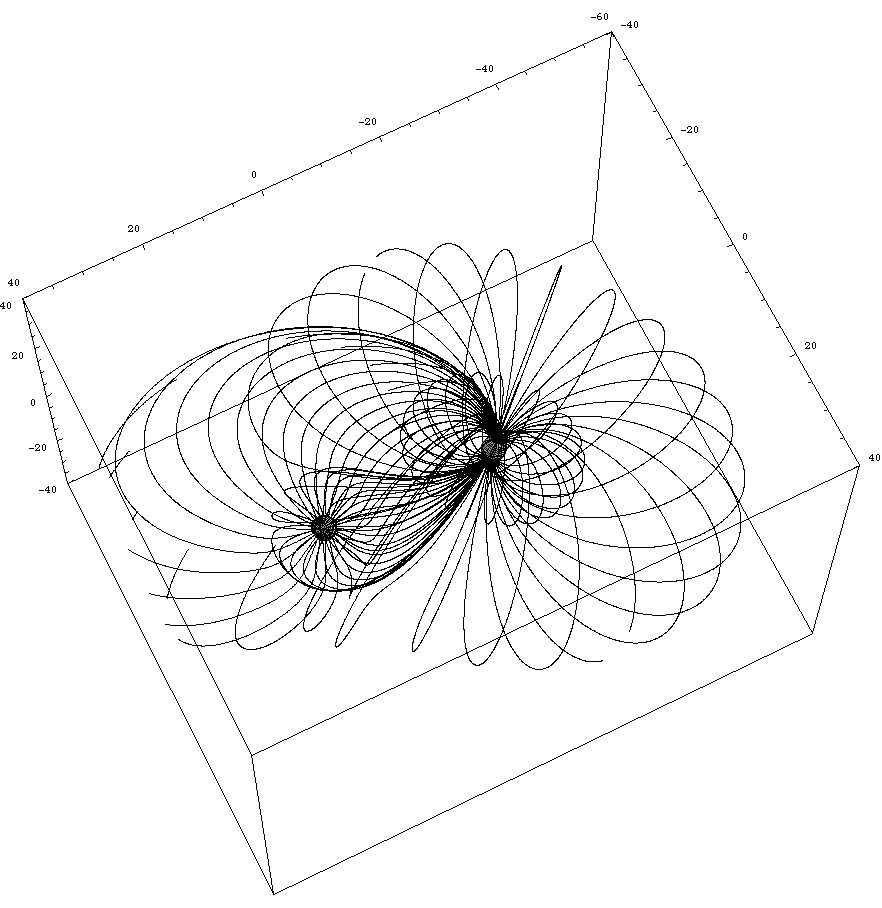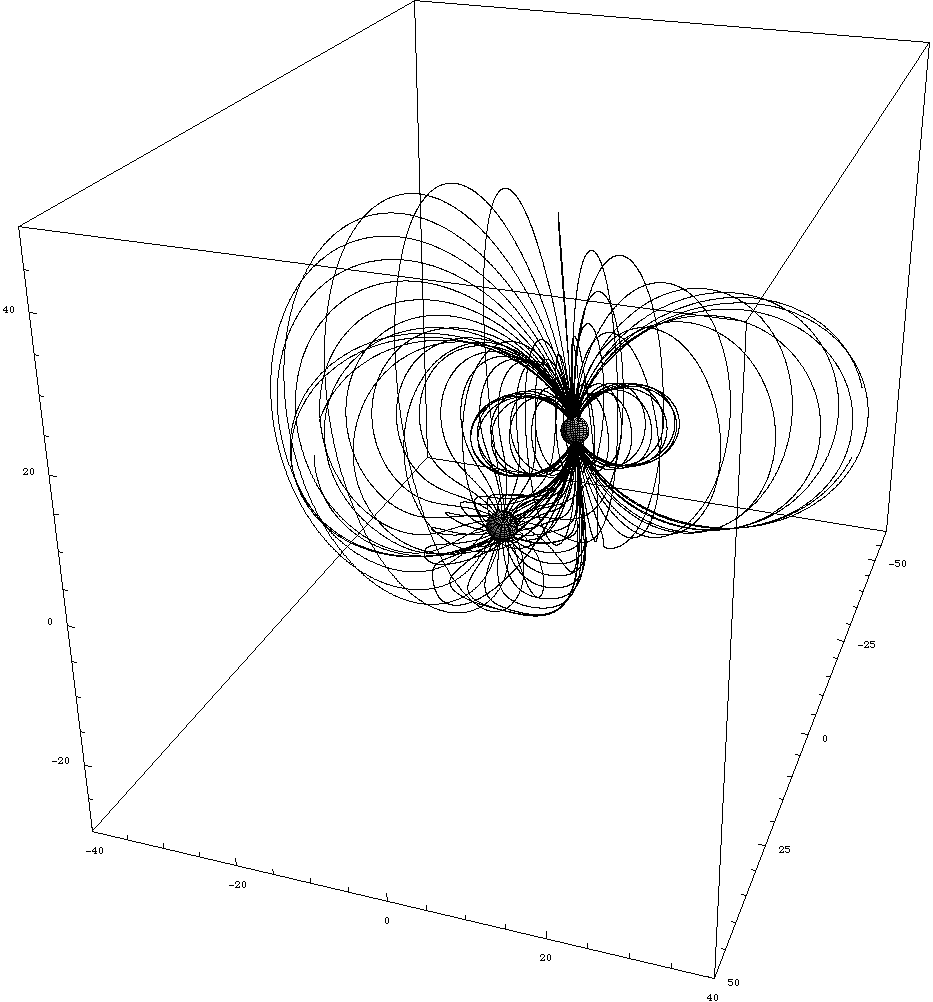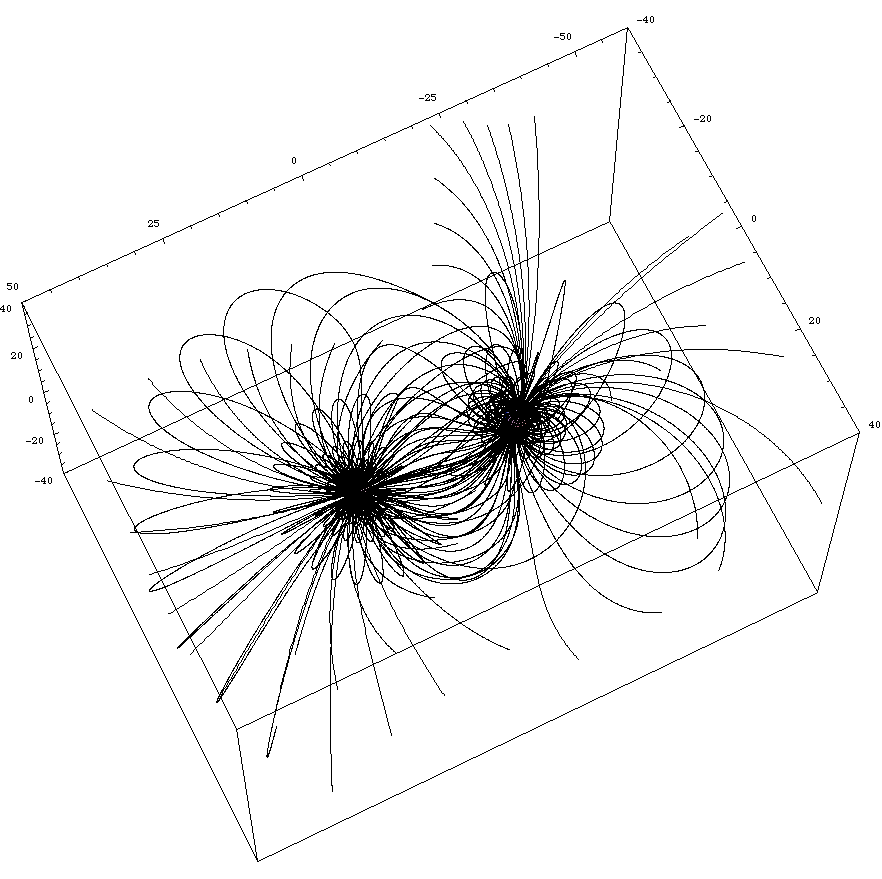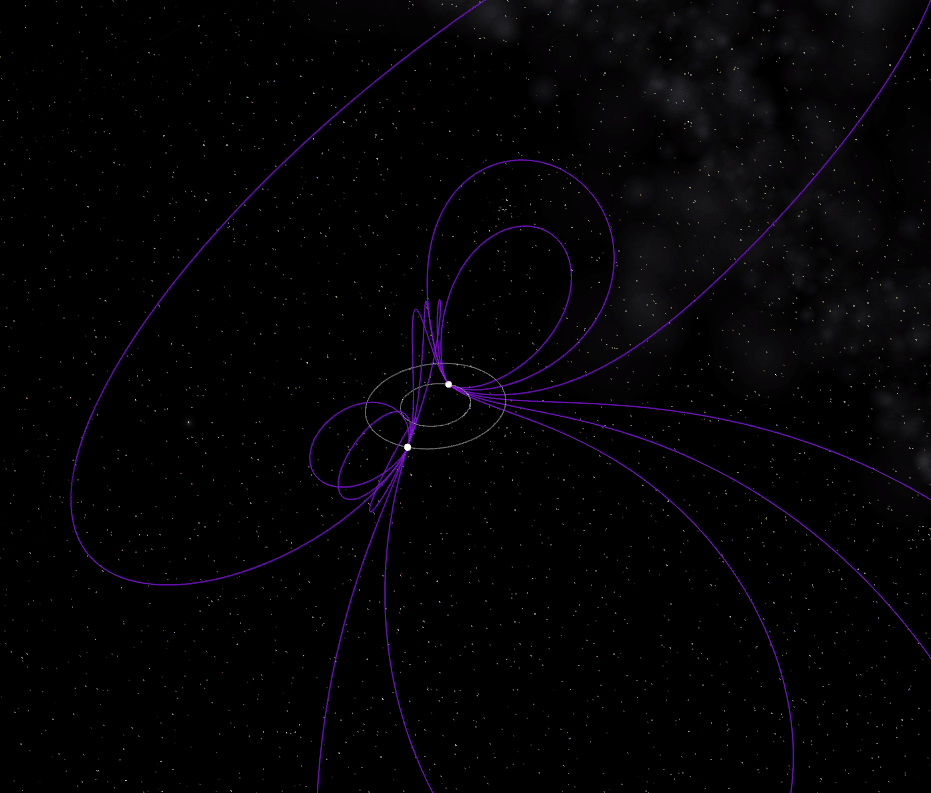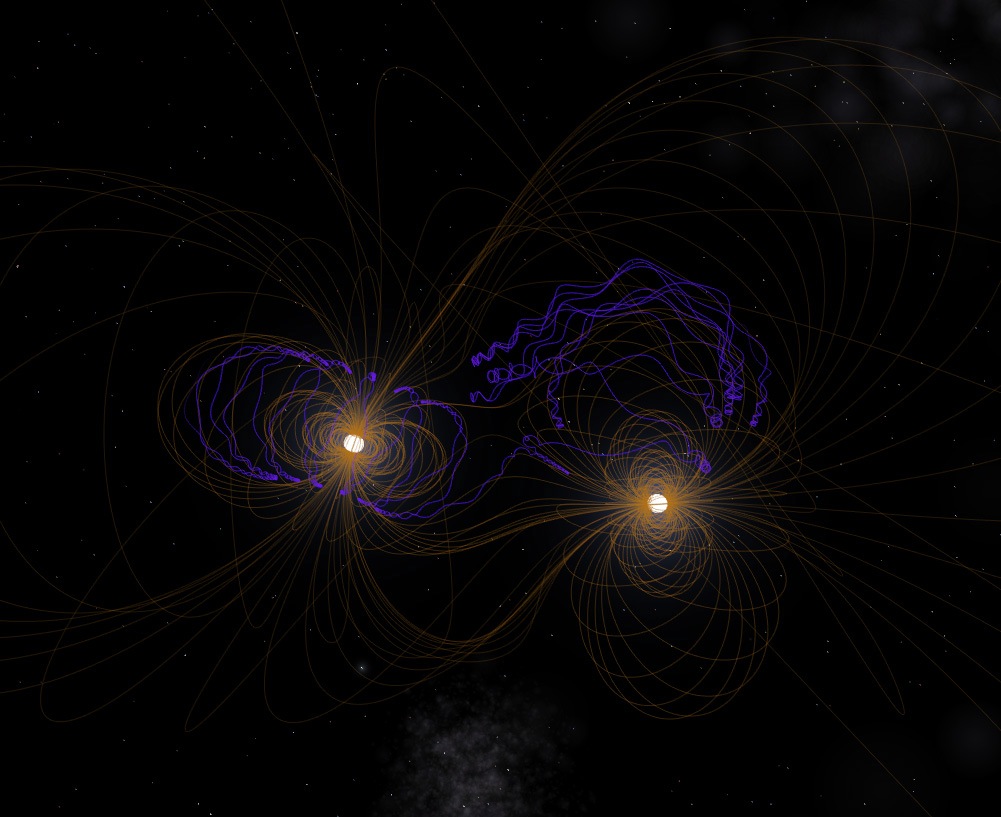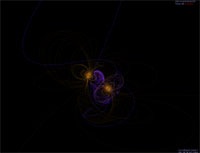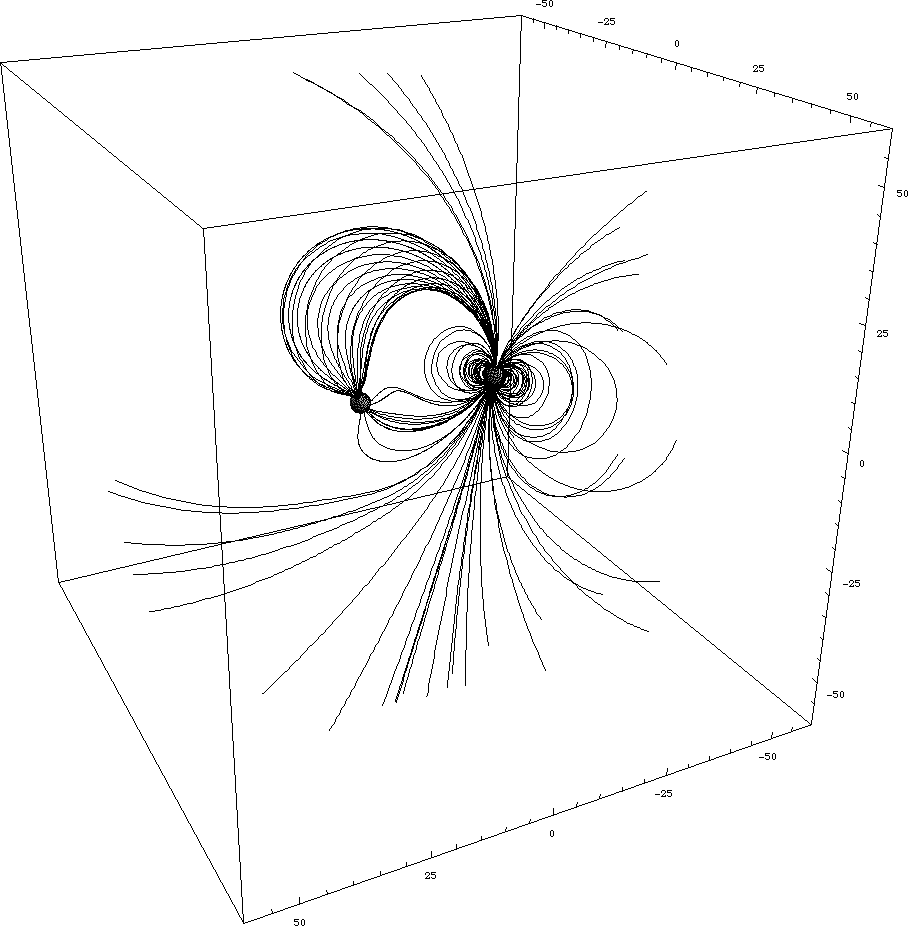
Of course, this one isn't finished at all yet. The final field will be much better looking.
EDIT : GEEZ ! I'm now having enough stuff for MONTHS ! (if not YEARS !). That new configuration is giving lots of EXTREMELLY interesting results (well, only for people who are interested in magnetic fields, I guess). There are so much parameters to vary (both dipoles orientations and relative strength, distance, etc), and for each set, the field has a very different pattern. Mathematica is doing a great job here, and I can now export all the lines directly to Celestia. This is trully fantastic !
The currently active CMOD projects I'm working on are :
1- finishing the rotating magnetic dipoles with radiation
2- light (and massive particles) geodesics in Kerr geometry
3- that new two dipoles configuration
I don't think I'll work on configurations with three dipoles or more, even if my Mathematica code is now trivial to modify. I don't think I'll add any quadrupole field for a very long time, since I already have so much to do.
I now feel like an over excited child !

